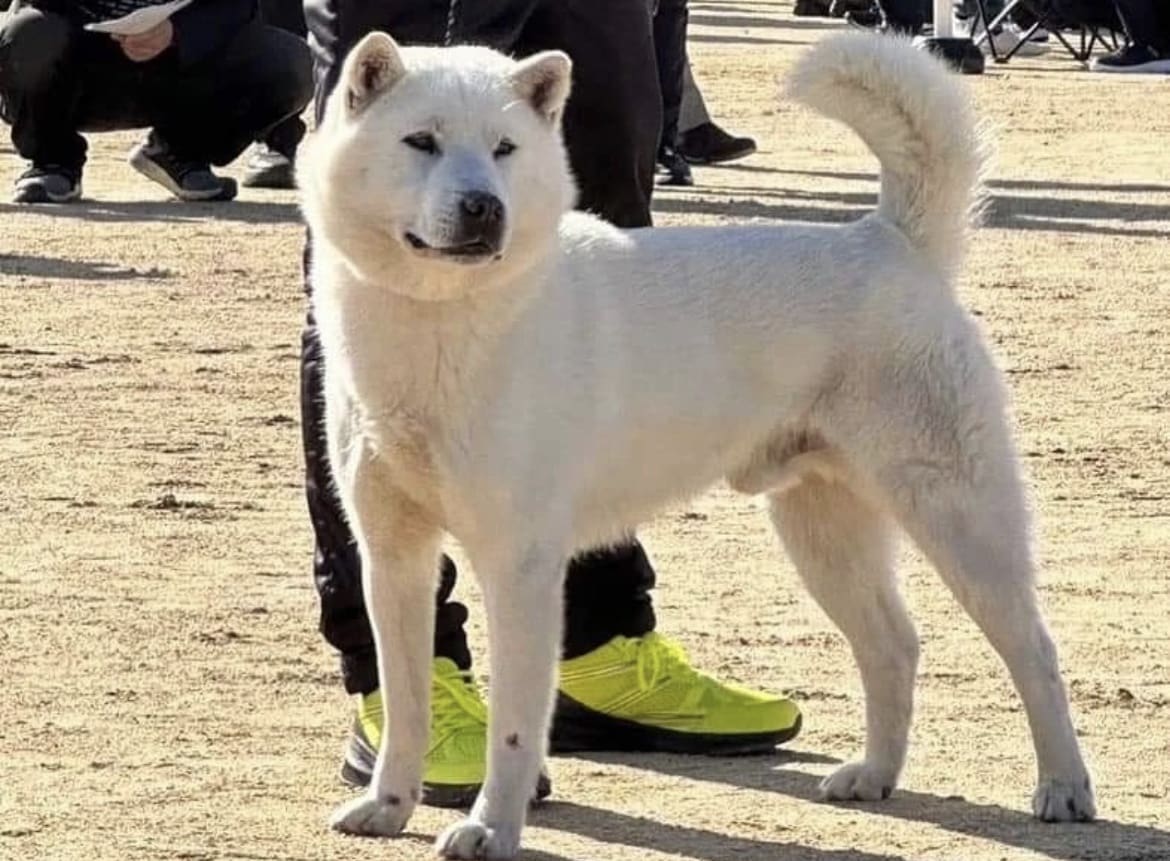Japan: a place where ancient traditions meet futuristic cities, and the wildlife? Absolutely mind-blowing. You’re not just signing up for temples and sushi; you’re diving into a world where animals chill in hot springs and mythical creatures roam the forests.
So, grab your backpack, we’re going on a wild ride through Asia to meet 20 of the coolest animals in Japan. Trust me, it’s not just about the deer in Nara.
20 Awesome Animals in Japan
1. Japanese Macaque
First stop, Jigokudani Monkey Park. Imagine chilling in a hot spring, snow gently falling, and next to you? A Japanese Macaque, just soaking the day away. These guys have life figured out.
Known as snow monkeys, they’ve become celebrities for their onsen-loving antics. But it’s not all spa days; these monkeys face threats from habitat loss and climate change. Witnessing their steamy retreats is a must-do, but it’s also a call to support wildlife protection efforts. Because, honestly, who wouldn’t want to protect the world’s chillest primates?

2. Tanuki
Part adorable critter, part legendary shape-shifter, these raccoon dogs are all about the duality of Japan’s wildlife. Spotted a ceramic tanuki with a massive belly outside a restaurant? That’s them, the folklore stars. But beyond the myths, real tanuki are fascinating creatures, adapting to both rural and urban settings.
While they’re not endangered, their habitats are under pressure. Seeing a tanuki in the wild is like stepping into a Studio Ghibli film—magical, a bit surreal, and an experience you won’t forget.

3. Nara’s Sacred Shika Deer
Ah, Nara Park, where deer roam free and the selfie opportunities are endless. But these aren’t just any deer; they’re considered sacred, thanks to a legend that a deity arrived in Nara on a white deer.
Today, they’re protected by law, and you can feed them special crackers sold around the park. But remember, while they might seem tame, they’re still wild animals. Respect is key. Feeding a Nara deer is like a rite of passage for travelers in Japan, blending a unique mix of culture, history, and wildlife.
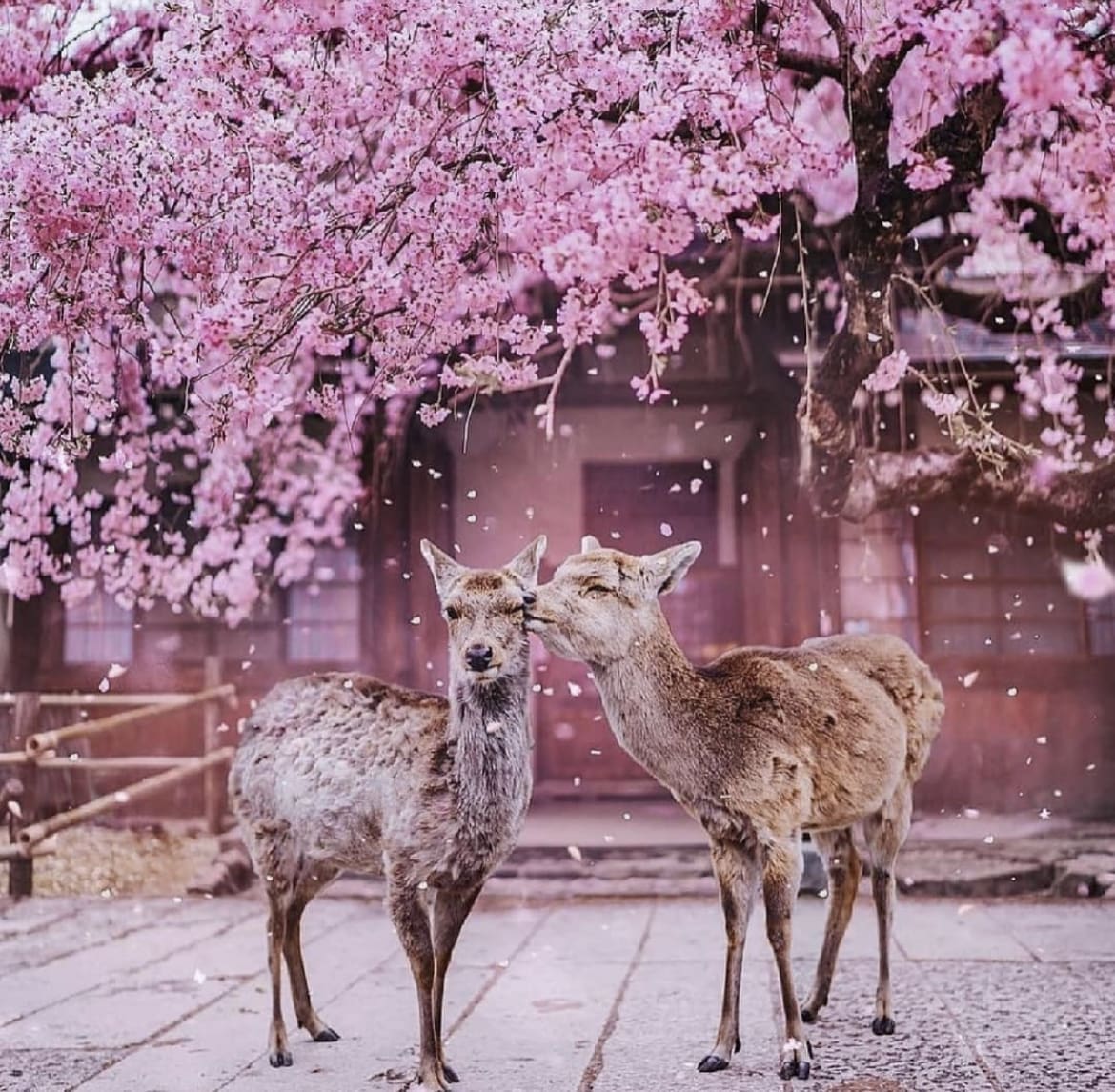
4. Japanese Giant Salamander
Moving on to something a bit more…slippery. The Japanese Giant Salamander is a creature straight out of a fantasy novel. These amphibians are living fossils, unchanged for millions of years, and they’re huge—some grow up to 1.5 meters long! Spotting one in the wild is rare, but if you’re trekking near rivers in Hiroshima or Kyushu, keep your eyes peeled.
Conservation efforts are in place to protect these ancient beings, highlighting the importance of preserving Japan’s natural habitats. It’s a reminder of the delicate balance between modern life and ancient wilderness.
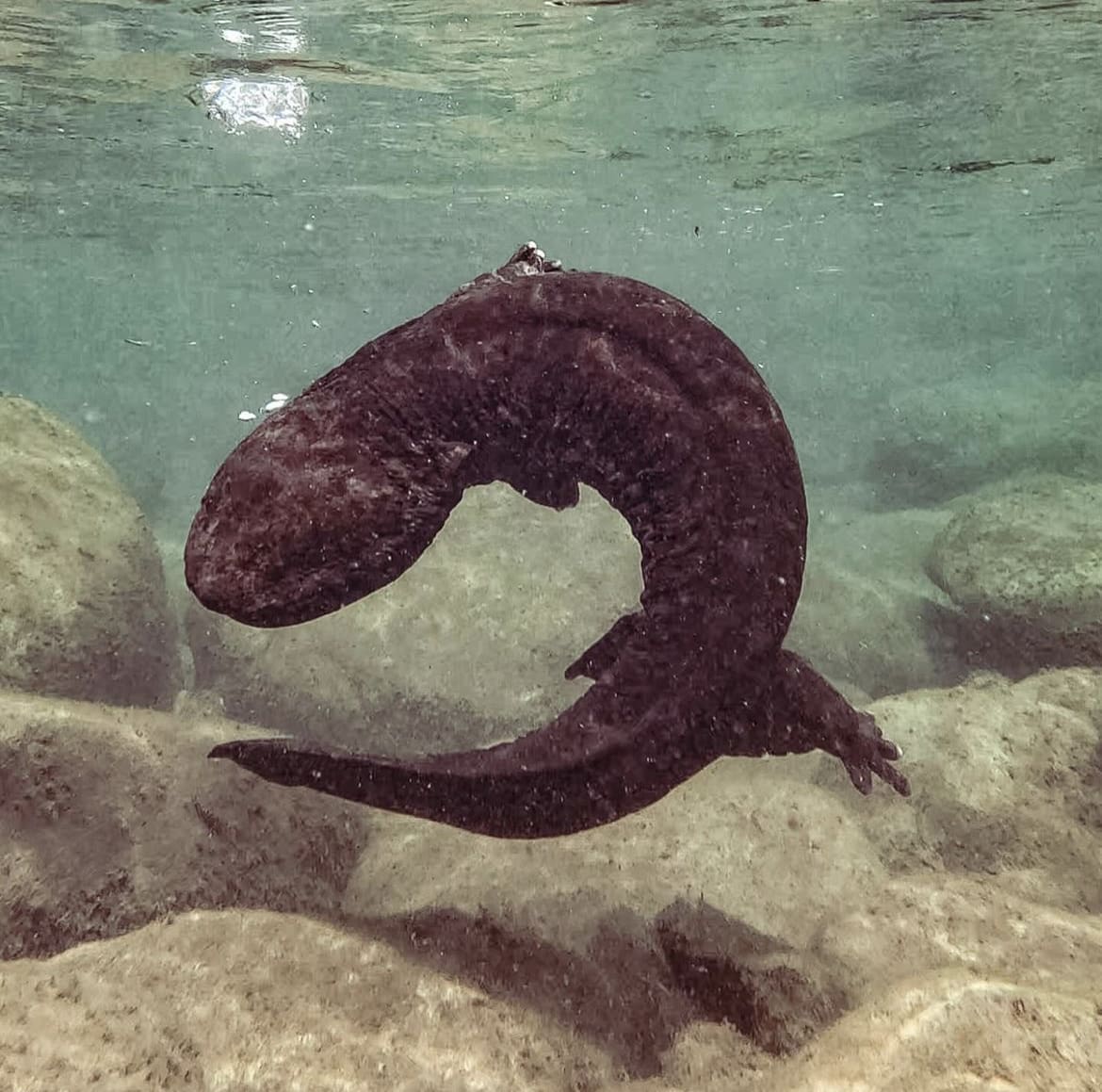
5. Red-Crowned Cranes
Certainly not least, are the red-crowned cranes. Symbols of luck, longevity, and fidelity, these birds are stunning with their contrasting black-and-white plumage and vibrant red caps.
Winter in Hokkaido turns into a crane paradise, with these elegant birds performing their famous courtship dance. Sadly, they’re a vulnerable species, with habitat loss posing a significant threat. Witnessing their dance is a once-in-a-lifetime experience, a testament to the beauty and fragility of nature.

6. Japanese Serow
Halfway up a misty mountain, you might just spot the elusive Japanese Serow, a creature that looks like it stepped right out of a mythical forest. This goat-antelope is a symbol of Japanese wildlife conservation, a testament to the country’s commitment to preserving its natural inhabitants. With its distinctive shaggy coat and calm demeanor, the serow prefers the solitude of Japan’s dense forests.
Spotting one is a sign of good luck and a reminder of the wildness that lies just beyond the cityscapes. Their status as a protected species underscores the balance Japan seeks between development and nature conservation.
So, keep your eyes peeled on your next mountain hike; you might just meet one of these guardians of the forest.
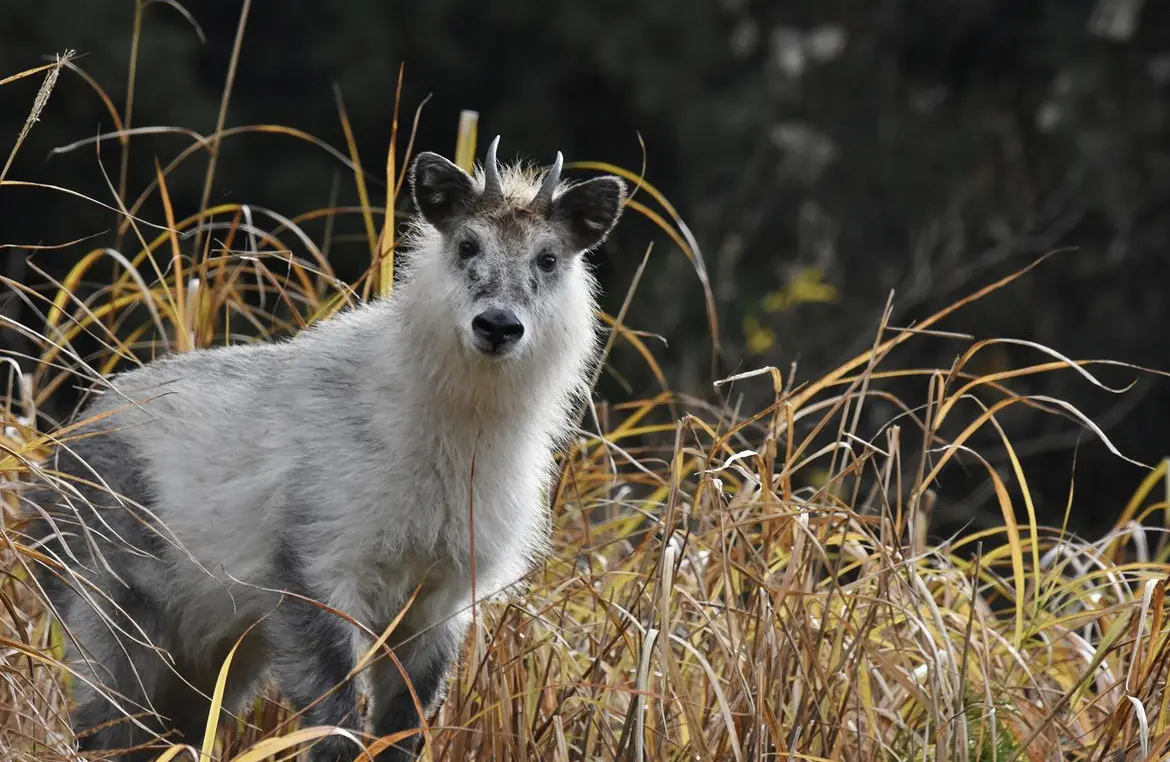
7. Tsushima Leopard Cat
Now, let’s whisk away to the remote Tsushima Island, where the secretive Tsushima Leopard Cat prowls. This small wildcat is as elusive as it is endangered, making sightings a rare and privileged experience. Conservationists are working hard to protect this unique species, which faces threats from habitat loss and a shrinking gene pool.
Observing a Tsushima Leopard Cat in its natural habitat is a stark reminder of the fragility of ecosystems and the urgent need for conservation efforts. For those passionate about wildlife, supporting these efforts can make a real difference in the survival of such distinctive species.

8. Japanese Squirrel
Switching gears to something a bit more cuddly, the Japanese Squirrel takes cuteness to the next level. These fluffy tailed critters are a common sight in Japan’s woodland areas, darting about with an energy that’s both entertaining and endearing.
Unlike the urbanized squirrels of many cities around the world, Japanese Squirrels maintain a charming wildness, a reminder of Japan’s rich biodiversity.
Spotting these playful creatures is a delight for any nature lover and a perfect opportunity for those looking to capture the essence of Japan’s forests in their natural, unspoiled state.

9. Steller’s Sea Eagle
Prepare to look up, way up, when you’re in Hokkaido, for the Steller’s Sea Eagle might just be soaring overhead. With its impressive wingspan and striking appearance, this eagle is a symbol of power and freedom. Winter in Hokkaido provides the perfect backdrop for these majestic birds as they hunt and soar over the icy landscape.
Their presence is a testament to the wild beauty of Japan’s northernmost island and a highlight for bird watchers and wildlife photographers. The Steller’s Sea Eagle, facing threats from habitat loss and changing climates, represents the ongoing struggle for survival many of Japan’s wildlife species face.
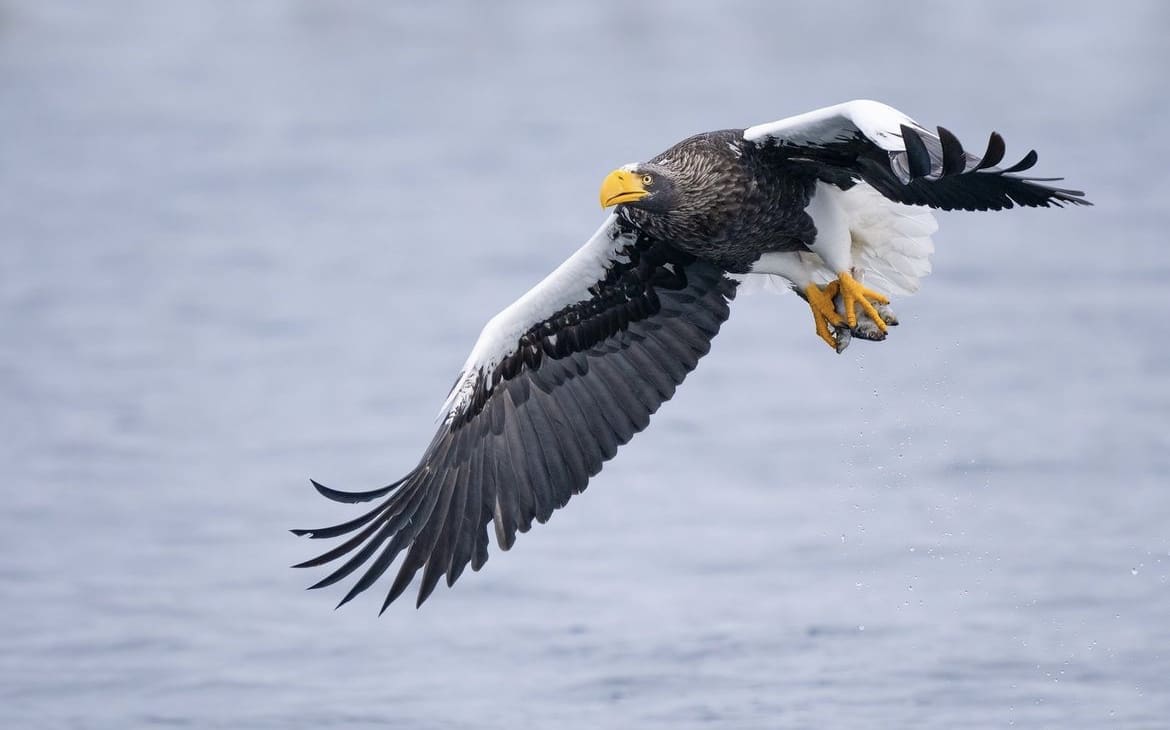
10. Hokkaido Brown Bear
Last for today, but definitely not least intimidating, is the Hokkaido Brown Bear. Roaming the vast wilderness of Hokkaido, these bears are the largest carnivores in Japan and command a deep respect from those who venture into their domain.
Observing these magnificent creatures in the wild is an unforgettable experience that underscores the raw power and beauty of nature. However, with their habitat under pressure from human encroachment, the brown bear’s existence is a poignant reminder of the delicate balance between humans and wildlife.
For those lucky enough to witness a Hokkaido Brown Bear in the wild, it’s a powerful call to support conservation efforts that ensure future generations can also experience the thrill of such encounters.

11. Iriomote Cat
On the lush, verdant island of Iriomote, a rare gem of the animal kingdom prowls – the Iriomote Cat. This elusive feline is more than just a cat; it’s a symbol of the wild, untouched beauty that still exists in remote corners of Japan.
Critically endangered, with an estimated population of fewer than 250 adults, seeing one in the wild is a rare privilege, akin to stumbling upon a hidden treasure.
The fight to protect the Iriomote Cat from threats like habitat destruction and road accidents is a poignant chapter in Japan’s conservation story. It’s a call to action for all of us to consider the impact of our footprint on the world’s most vulnerable species.
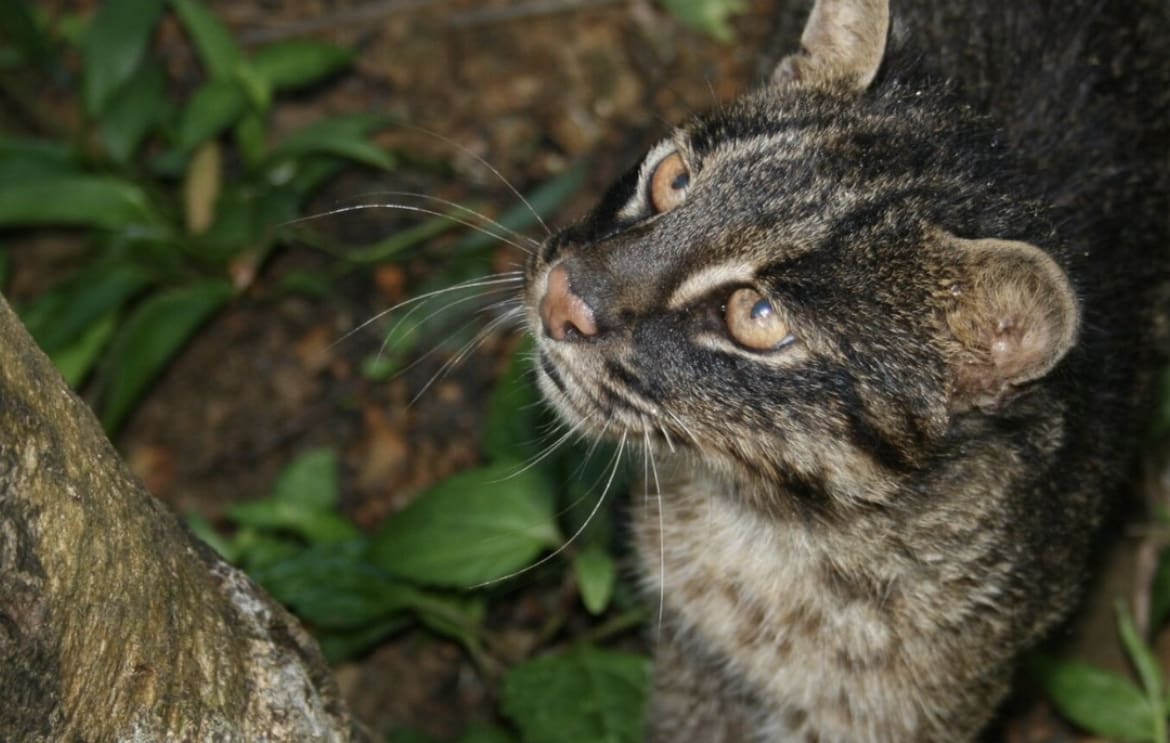
12. Okinawa Rail
The dense forests and wetlands of Okinawa are home to a bird that’s as mysterious as it is endangered – the Okinawa Rail. This bird, with its distinctive call and shy nature, is a challenge to spot, making it a coveted sighting for birdwatchers.
The Okinawa Rail’s struggle for survival, amidst threats from habitat loss and predation by introduced species, highlights the complex challenges of conservation in Japan. Supporting habitat preservation efforts in Okinawa is crucial for ensuring that the melodious call of the rail continues to echo through the forests.

13. Japanese Fire-Bellied Newt
Diving into the cool, clear waters of Japan’s streams and ponds, one might encounter the vibrant Japanese Fire-Bellied Newt. This amphibian, with its striking orange belly and dark, spotted back, is a small but remarkable participant in Japan’s biodiverse ecosystem.
The newt’s ability to secrete toxins as a defense mechanism is just one of the fascinating adaptations that make Japan’s wildlife so unique. Observing these creatures in their natural habitat is a vivid reminder of the intricate web of life that thrives in even the smallest, most overlooked corners of the planet.
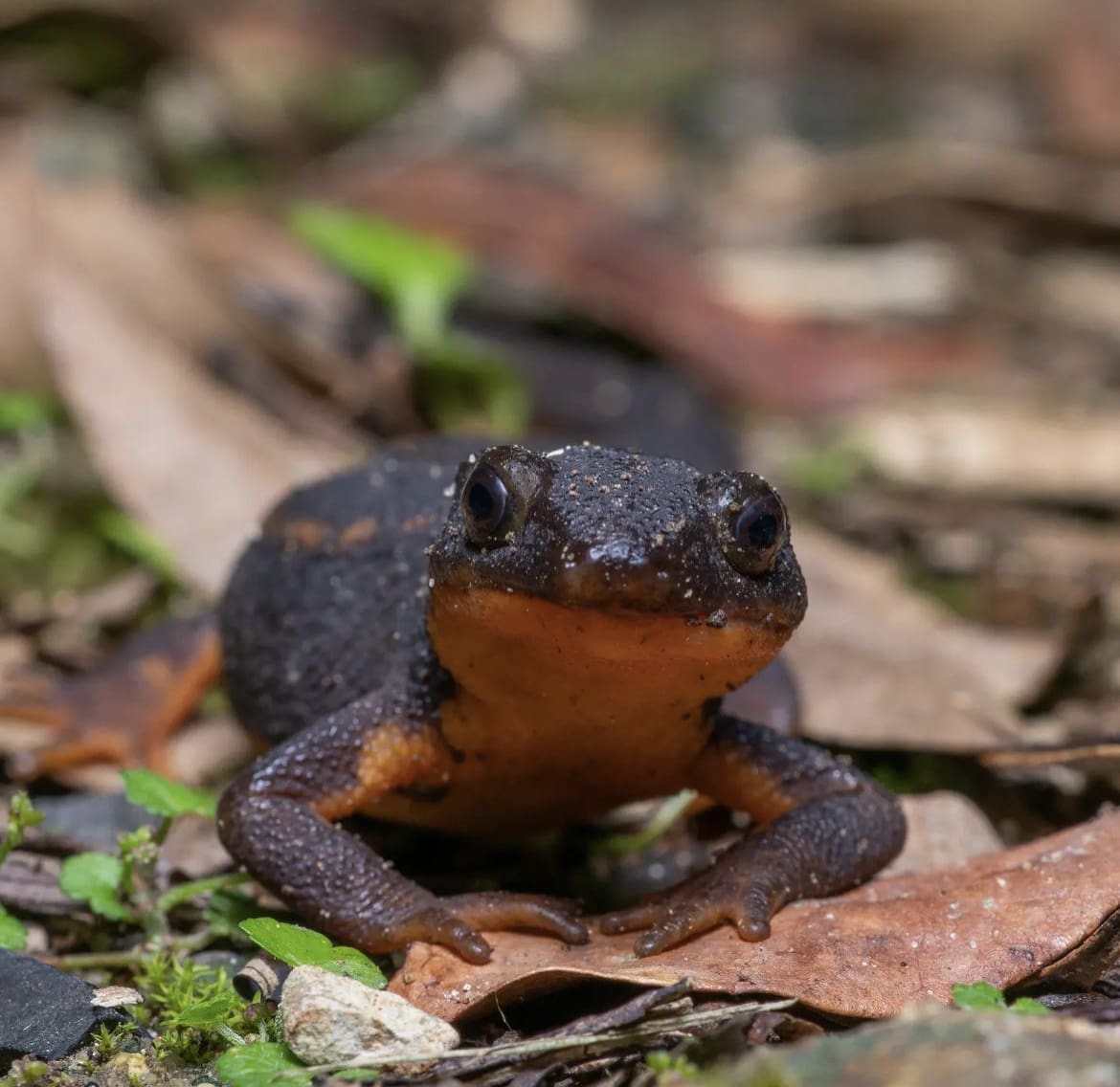
14. Japanese Flying Squirrel
As night falls over Japan’s wooded areas, another enchanting creature emerges – the Japanese Flying Squirrel. These nocturnal marvels don’t actually fly but glide from tree to tree, using a membrane between their legs to navigate the forest canopy.
Watching a flying squirrel embark on its aerial journey is a magical experience, a glimpse into the hidden nocturnal world of Japan’s forests. The survival of these squirrels depends on the preservation of forest habitats, underscoring the importance of conservation efforts to maintain the natural beauty and diversity of Japan’s landscapes.
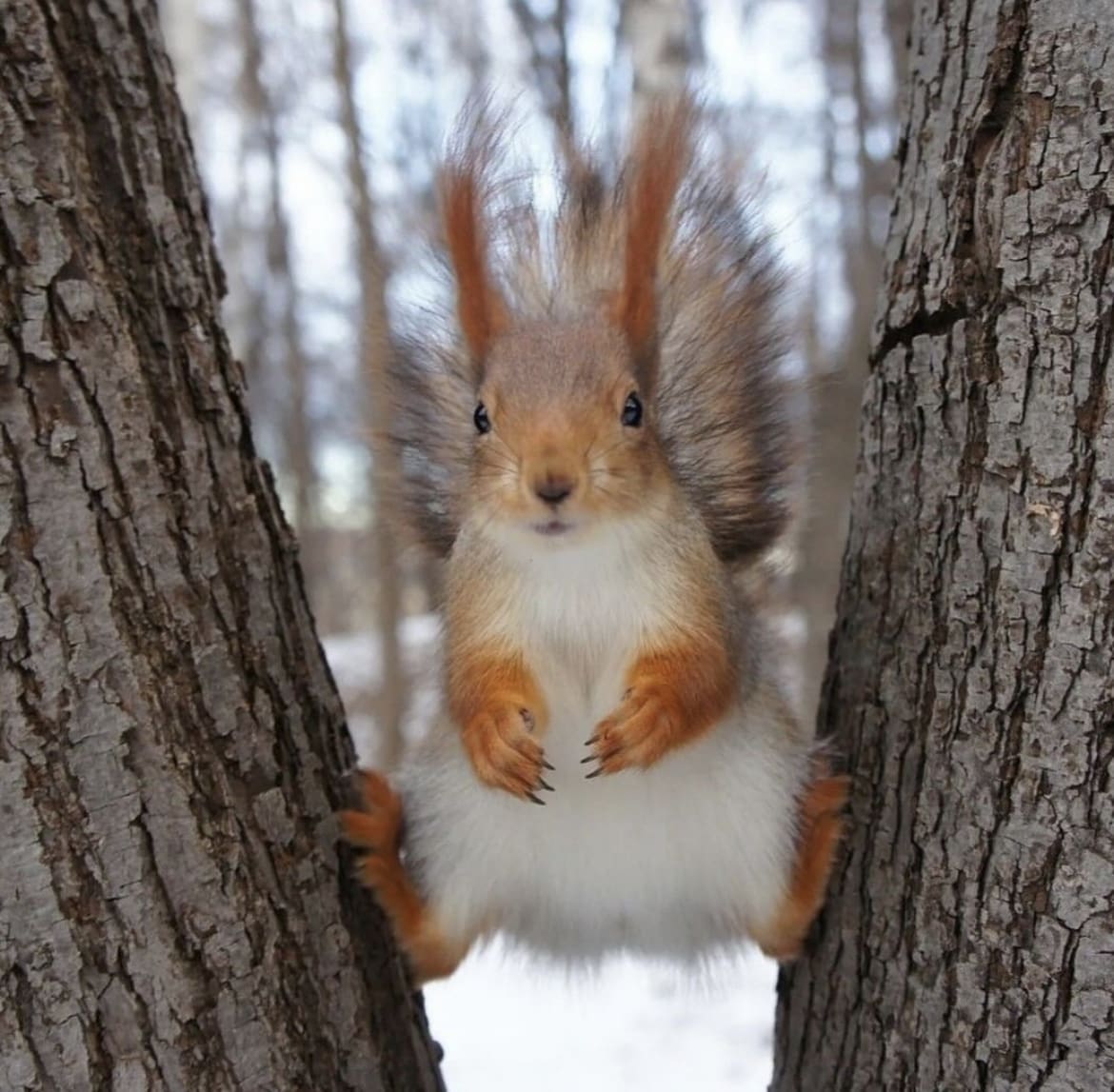
15. Asiatic Black Bear
Venturing deeper into the forest, we encounter the Asiatic Black Bear, also known as the “moon bear” for the distinctive crescent-shaped mark on its chest. These bears, found in the mountainous regions of Japan, are a testament to the wildness that still thrives within the country.
The Asiatic Black Bear’s existence is threatened by habitat loss, poaching, and conflicts with humans, making their conservation a critical issue.
Observing these bears in the wild, with respect and from a safe distance, is a profound experience that connects us to the untamed heart of Japan and the need to protect these magnificent creatures for generations to come.
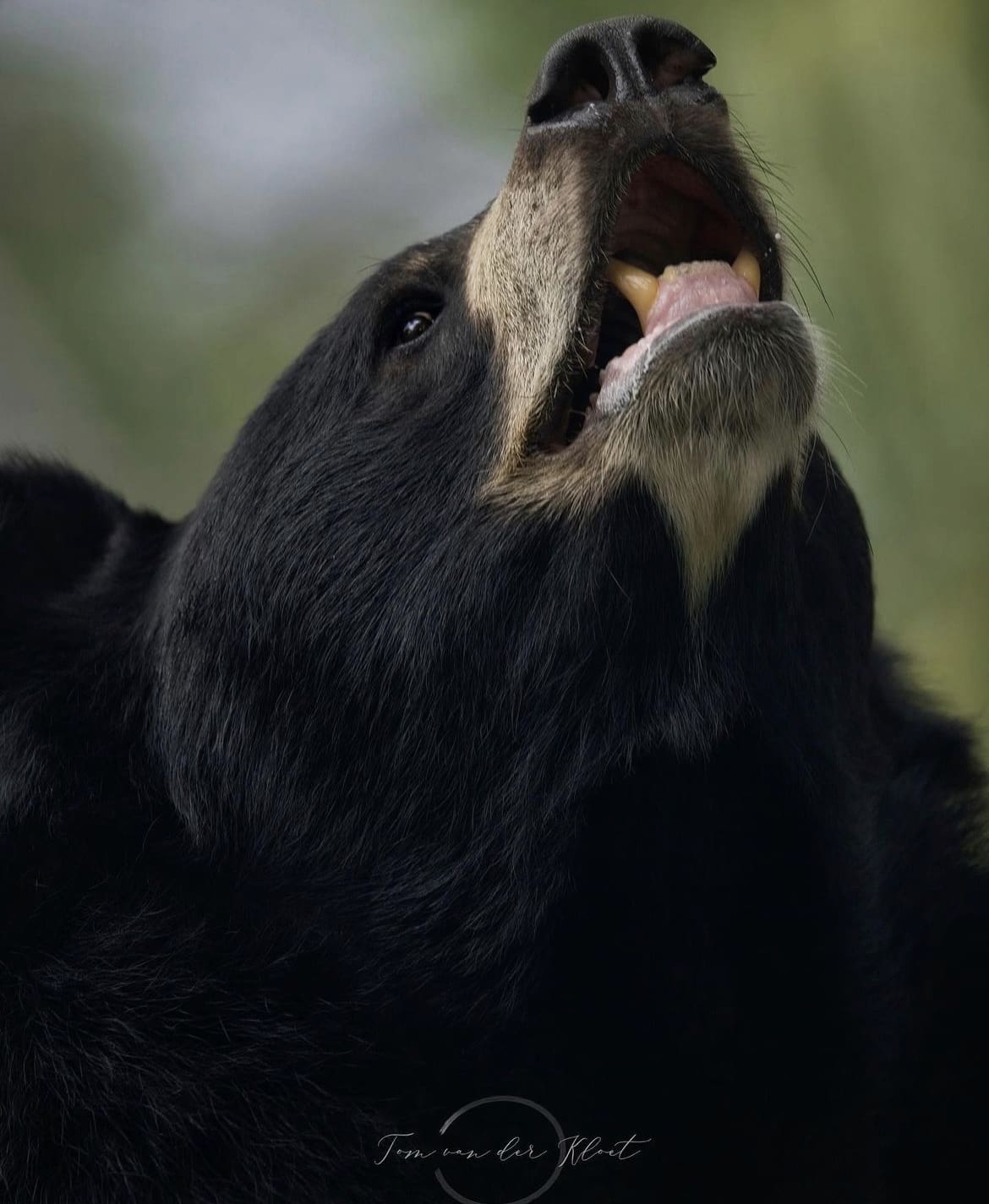
16. Green Pheasant
The Green Pheasant, with its iridescent plumage and striking appearance, is not just any bird—it’s Japan’s national bird. Roaming the fields and forests, the male flaunts a brilliant mix of green and blue, while the female sports a more subdued hue.
This bird embodies the beauty and resilience of Japan’s natural world, adapting to the changing landscapes while maintaining its regal presence. Observing the Green Pheasant in its natural habitat offers a glimpse into the unspoiled beauty of Japan’s countryside, reminding us of the importance of protecting these natural spaces.
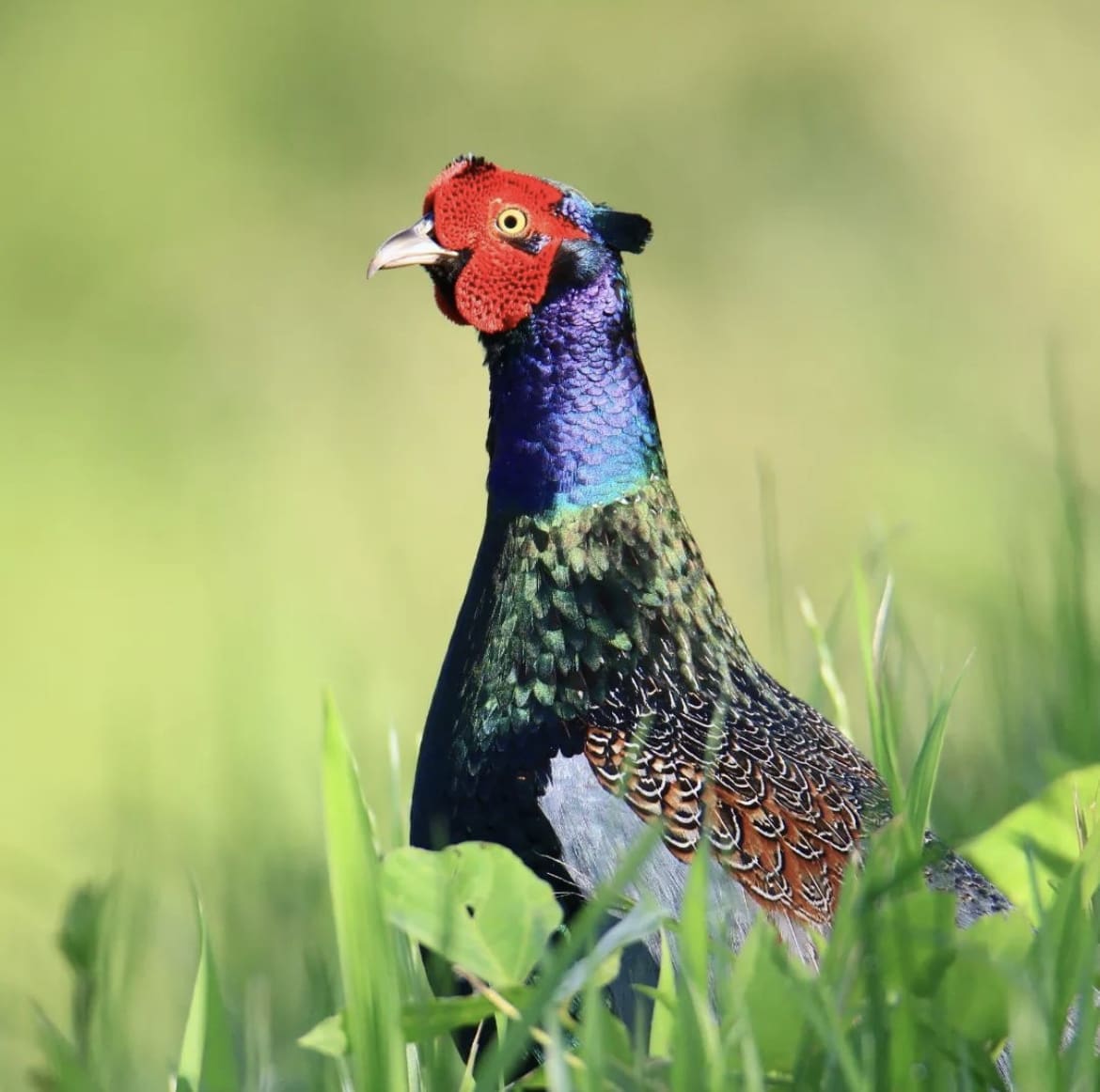
17. Ryukyu Kingfisher
On the subtropical islands of the Ryukyu archipelago, the Ryukyu Kingfisher brings a burst of color to the lush landscapes. This vividly hued bird, with its deep blue and rich orange plumage, is a sight to behold. The Ryukyu Kingfisher, endemic to these islands, is a symbol of the unique biodiversity that thrives in Japan’s more remote regions.
Their presence highlights the richness of the ecosystems here and underscores the need for conservation efforts to protect these island jewels and their feathered inhabitants.
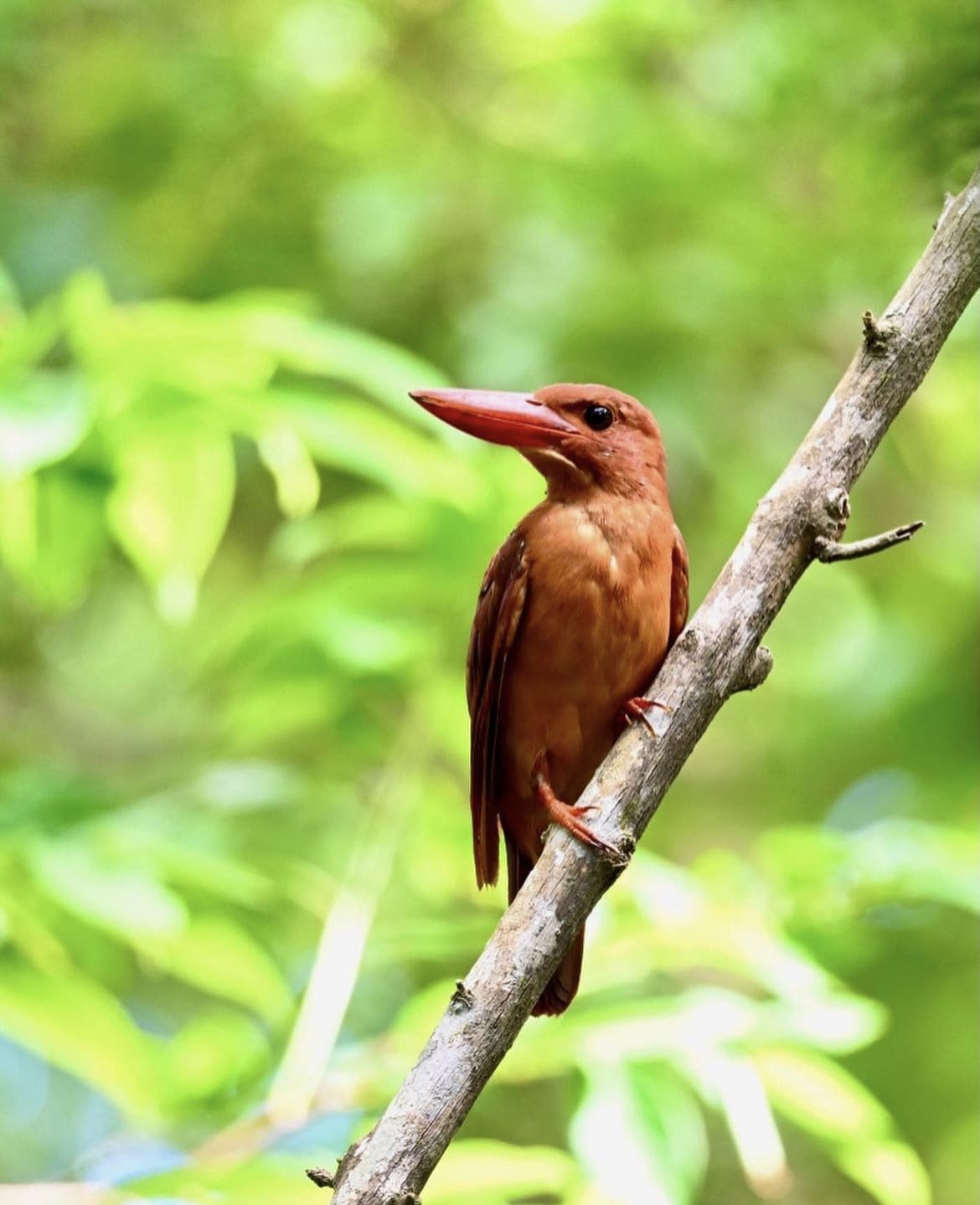
18. Sika Deer Across Japan
While we’ve touched on the sacred deer of Nara, the Sika Deer’s story extends across Japan, from the rural landscapes to the fringes of urban areas. These adaptable creatures have a complex relationship with their environment, often celebrated for their beauty and cultural significance, yet also facing challenges due to overpopulation in some areas.
The Sika Deer embodies the delicate balance between humans and wildlife in Japan, a reminder of the need for coexistence and sustainable management of natural resources.
19. Japanese Honeybee
The Japanese Honeybee may not be the largest or the most striking of Japan’s animal inhabitants, but its impact on the environment is immense. These industrious insects play a crucial role in pollinating plants, including many crops essential to human agriculture.
Their unique behavior and resilience against pests make them a fascinating study in adaptation and survival. Supporting efforts to protect the Japanese Honeybee and its habitat is vital for maintaining biodiversity and ensuring the health of ecosystems across Japan.
20. Kishu Ken
Concluding our journey is the Kishu Ken, a noble dog breed that embodies the spirit of Japan’s wilderness. With a history as hunters and loyal companions, these dogs are a living link to the traditional ways of life that have existed in harmony with nature for centuries.
The Kishu Ken, with its dignified demeanor and strong bond with humans, represents the connection between people and the natural world, reminding us of the respect and reverence for life that is central to Japanese culture.
